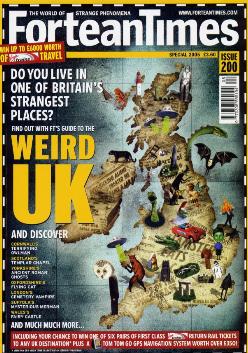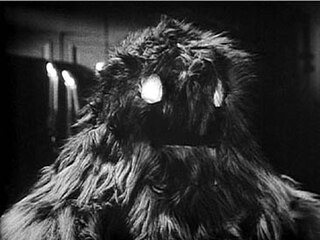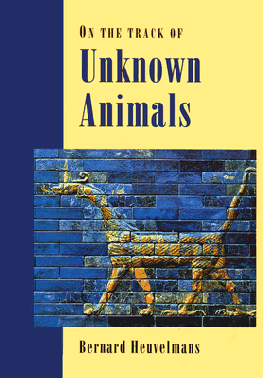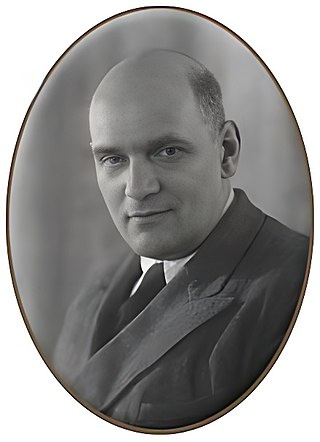Cryptozoology is a pseudoscience and subculture that searches for and studies unknown, legendary, or extinct animals whose present existence is disputed or unsubstantiated, particularly those popular in folklore, such as Bigfoot, the Loch Ness Monster, Yeti, the chupacabra, the Jersey Devil, or the Mokele-mbembe. Cryptozoologists refer to these entities as cryptids, a term coined by the subculture. Because it does not follow the scientific method, cryptozoology is considered a pseudoscience by mainstream science: it is neither a branch of zoology nor of folklore studies. It was originally founded in the 1950s by zoologists Bernard Heuvelmans and Ivan T. Sanderson.

The Yeti is an ape-like creature purported to inhabit the Himalayan mountain range in Asia. In Western popular culture, the creature is commonly referred to as the Abominable Snowman. Many dubious articles have been offered in an attempt to prove the existence of the Yeti, including anecdotal visual sightings, disputed video recordings, photographs, and plaster casts of large footprints. Some of these are speculated or known to be hoaxes.

Fortean Times is a British monthly magazine devoted to the anomalous phenomena popularised by Charles Fort. Previously published by John Brown Publishing, I Feel Good Publishing, Dennis Publishing, and Exponent (2021), as of December 2021 it is published by Diamond Publishing, part of Metropolis International.

Bernard Heuvelmans was a Belgian-French scientist, explorer, researcher, and writer probably best known, along with Scottish-American biologist Ivan T. Sanderson, as a founding figure in the pseudoscience and subculture of cryptozoology. His 1958 book On the Track of Unknown Animals is often regarded as one of the most influential cryptozoology texts.

The Mongolian death worm is a creature alleged to exist in the Gobi Desert. Investigations into the legendary creature have been pursued by amateur cryptozoologists and credited academics alike, but there has been little evidence found to support its existence. It can be considered a Cryptid or a mythological creature.
Karl Shuker is a British zoologist, cryptozoologist and author. He lives in the Midlands, England, where he works as a zoological consultant and writer. A columnist in Fortean Times and contributor to various magazines, Shuker is also the editor-in-chief of the Journal of Cryptozoology, which began in November 2012.

The Yeti are fictional robots from the long-running British science fiction television series Doctor Who. They were originally created by Henry Lincoln and Mervyn Haisman, and first appeared in the 1967 serial The Abominable Snowmen, where they encountered the Second Doctor and his companions Jamie and Victoria.
Loren Coleman is an American cryptozoologist who has written over 40 books on a number of topics, including the pseudoscience and subculture of cryptozoology.
In Pahang Malay folklore, the Seri Gumum Dragon is a legendary giant serpent locally called Nāga and commonly described as taking the form of an Asian dragon, that inhabit the Chini Lake in Pahang, Malaysia. There have been a variety of legends associated with the creature in the oral literature. The notable one is related to the origin myth of the lake itself, while another legend narrates about a love story between female Seri Gumum and a male Nāga called Seri Kemboja that leads to the origin myth of Tioman and Lingga Islands.

Darren William Naish is a British vertebrate paleontologist, author and science communicator.

Nicholas Redfern is a British best-selling author, journalist, cryptozoologist and ufologist.
A Ninki Nanka is a legendary creature in West African folklore Theres also said to be in Mande folklore a version that inhabits the Niger River an as far as the coasts of Guinea, and Guinea-Bissau called the "Ninimini". Descriptions of the creature vary, but most contend that the animal is reptilian and possibly dragon-like.

On the Track of Unknown Animals is a cryptozoological book by the Belgian-French zoologist Bernard Heuvelmans that was first published in 1955 under the title Sur la Piste des Bêtes Ignorées. The English translation by Richard Garnett was published in 1958 with some updating by the author and with a foreword by Gerald Durrell. A revised and abridged edition was published in 1965, and a further edition in 1995. It is credited with introducing the term cryptozoology and established its author as the "Father of Cryptozoology."
The Bukit Timah Monkey Man, commonly abbreviated as BTM or BTMM, is a legendary creature said to inhabit Singapore, chiefly in the forested Bukit Timah region. The creature is often cited as a forest-dwelling hominid or primate, and is also accounted for as being immortal; however, its exact identity remains unknown, and its existence disputed. Documentation of the BTM is sparse and scattered; the creature is largely considered a product of local folklore.

Boris Fyodorovich Porshnev was a Soviet historian known for his works on popular revolts in Ancien Régime France and a doctor of social sciences working on psychology, prehistory, and neurolinguistics as relating to the origins of man.
T. Peter Park is an historian, a former librarian, and a prolific Fortean commentator on anomalous phenomena. According to Chris Perridas, Park is "a foremost Fortean authority on H. P. Lovecraft and the cultural impact his writing has had on our culture through folklore."

Ivan Mackerle was a Czech cryptozoologist, author, design engineer and explorer. He organized expeditions to search for the Loch Ness monster of Scotland, the Tasmanian tiger in Australia, and the elephant bird in Madagascar. He was most notable for his search of the Mongolian death worm, and he conducted three trips to Mongolia in 1990, 1992 and 2004. He authored numerous books and publications and from 1998 until 2002 he was chief editor of the Czech paranormal magazine Fantastická fakta.

Anthony "Doc" Shiels is a Salford-born artist, magician and writer. After attending the Heatherley School of Fine Art in London, he moved to St Ives, Cornwall where in 1961, following the resignation of Barbara Hepworth, he was made a member of the committee of the influential Penwith Society of Arts. In St Ives he ran the progressive 'Steps Gallery', where he showed artists like Brian Wall and Bob Law. He had several solo exhibitions in London before then leaving St Ives following a drunken incident, in which he threatened police with a gun that he had obtained from painter-friend Terry Frost.











